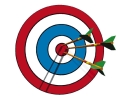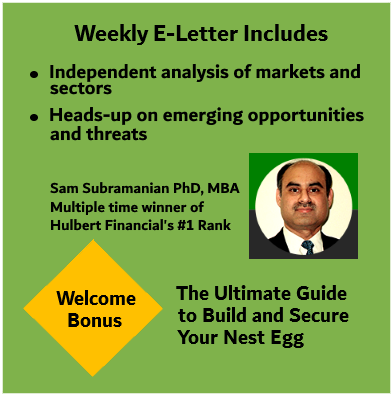Commodity exchange traded funds are hot. Assets in SPDR Gold Shares (GLD) have surged to nearly $60 billion to make it the second largest ETF behind the SPDR S&P 500 ETF (SPY).
The threat of inflation and the ease of access of commodity ETFs are some factors that account for the growing popularity of commodity exchange traded funds.
iPath DJ-UBS Cotton ETN (BAL) takes the honor for being the best commodity ETF in 2010 with a sizzling 77% gain. iShares Silver Trust (SLV) takes the second spot with a 70% advance.
Not all commodity ETFs have been winners. United States Natural Gas (UNG), iPath DJ-UBS Cocoa ETN (NIB), and iPath DJ-UBS Lead (LD) cluster at the other end of the performance spectrum losing 40%, 11%, and 5%, respectively.
Given such differences in performance are plausible even within a seemingly related group of ETFs, how does one analyze and choose the best commodity ETF?
Commodity exchange traded funds can be classified into four broad categories: agriculture, energy, precious metals, and industrial metals. The article spells out best commodity ETFs within each category.
To get a grip on this, it is useful to group commodities into major complexes and understand key factors that often tend to drive prices within each complex.
Agricultural Commodity ETF
As demand for agriculture commodities is steadily growing due to a rise in global population, variation in supply is often the major driver of price changes. Weather changes to a large degree account for variability in supply.
Best Commodity ETF
PowerShares DB Agriculture (DBA) which invests in cattle feeder, cocoa, coffee, corn, cotton, lean hogs, live cattle, soybeans, sugar, and wheat.
Energy Commodities ETF
There are three types of energy commodities: oil, natural gas, and products like gasoline & heating oil. The price of energy commodities in general tends to be sensitive to the level of economic activity. While oil is an international commodity whose price is subject to global supply and demand forces, natural gas is primarily a domestic commodity. In products markets, local industrial activity is the main demand driver. Product specifications and availability of refining capacity are among the factors that impact supply.
Top Commodity Exchange Traded Funds
- PowerShares DB Energy (DBE) which invests in a basket of energy commodities including crude oil, heating oil, gasoline and natural gas.
- PowerShares DB Oil Fund (DBO) and United States Natural Gas (UNG) for investors seeking focused exposure to oil and natural gas, respectively.
-
Precious Metals ETF
Investor see precious metals as an inflation hedge as well as a safe-haven against financial or political turmoil. Prices of precious metals often move with little or no correlation to stock prices. As such, precious metal investments play a useful role in portfolio diversification and risk management.
Top Commodity Exchange Traded Funds
SPDR Gold Shares (GLD) and iShares Silver Trust (SLV) which invest in gold and silver, respectively.
Industrial Metals ETF
The wide use of industrial metals in construction and manufacturing industries makes their prices sensitive to level of economic activity. In recent years, this relationship is distorted by nations like China that build base metal inventories for their ‘strategic value’. Combining economic sensitivity with ‘strategic value’, industrial metals have the characteristics of both energy commodities and precious metals.
Best Commodity ETF
PowerShares DB Base Metals (DBB) invests in aluminum, copper, and zinc.
Diversified Commodity ETF
Investors looking for a one-stop commodity exchange traded fund have the choice of investing in PowerShares DB Commodity Index Tracking Fund (DBC). This ETF provides exposure to 14 commodities including agricultural commodities, energy commodities, precious metals, and industrial metals.
Considerations for Investing in Commodity Exchange Traded Funds
Prices of commodity exchange traded fund are influenced by three major factors:
- Changes in spot commodity prices
- Shape of the forward price curve, i.e., spot/futures price convergence
- Short term interest rates
To earn the best returns with commodity ETFs, investors need to analyze all of the three factors.
The commodity ETF’s management strategy plays a key role in determining returns. The spot price may move favorably. Yet, the commodity ETF’s return can be crimped by the adverse impact of negative roll yields that result from an upward sloping forward price curve, i.e., contango. An unsuspecting investor can end up losing money with commodity exchange traded funds even when the spot commodity price is rising.
Specific commodity exchange traded products also require investors to take the credit risk of the ETF issuing institution. Some commodity exchange traded funds require investors to deal with a K-1 at tax time.
What Does This Mean for Commodity ETF Investors
Commodity exchange traded funds are attractive investments that can provide diversification benefits. However, commodity exchange traded funds are complex investment vehicles. At a minimum, investors need to analyze the trend in spot commodity prices along with the commmodity ETF management strategy to determine the best commodity ETF.

 Sick buying high & selling low? Fed up of the fees you pay? Tired researching investments? End your financial pain now. You have the opportunity to
Sick buying high & selling low? Fed up of the fees you pay? Tired researching investments? End your financial pain now. You have the opportunity to 


 DEC. 1993 to DEC. 2023
DEC. 1993 to DEC. 2023





